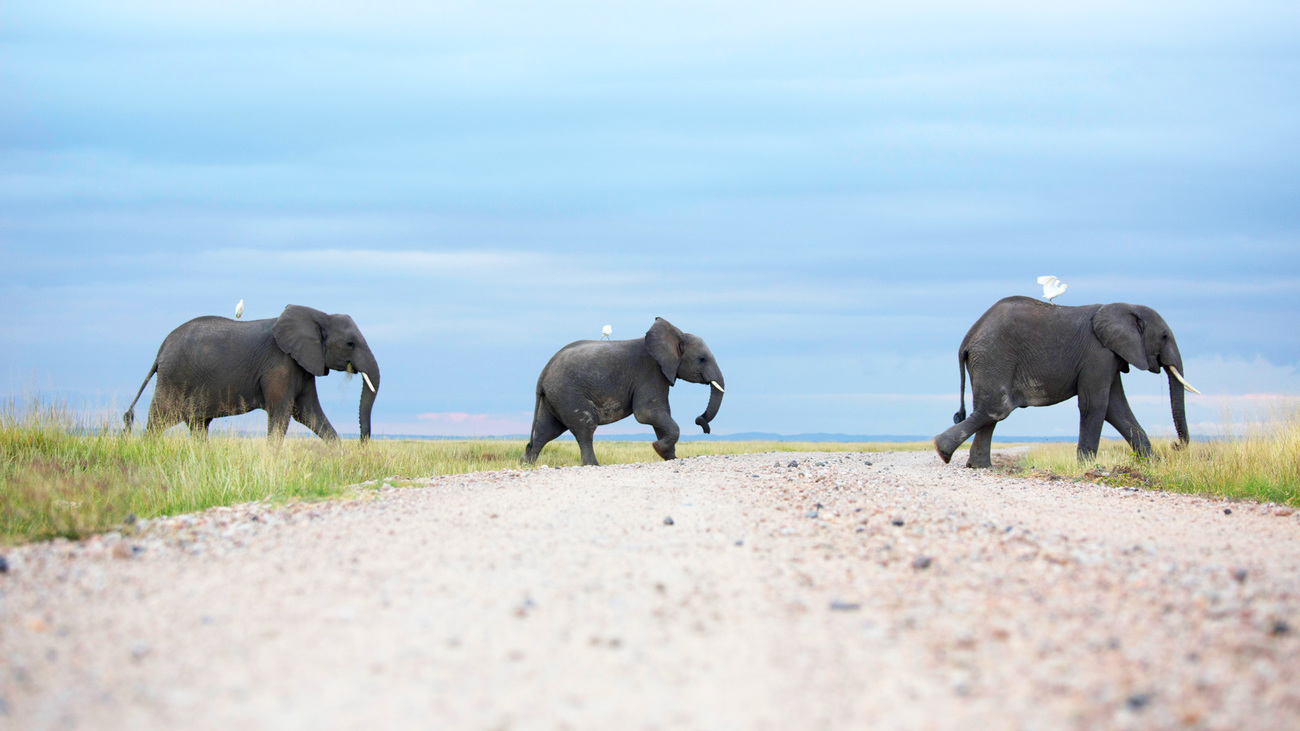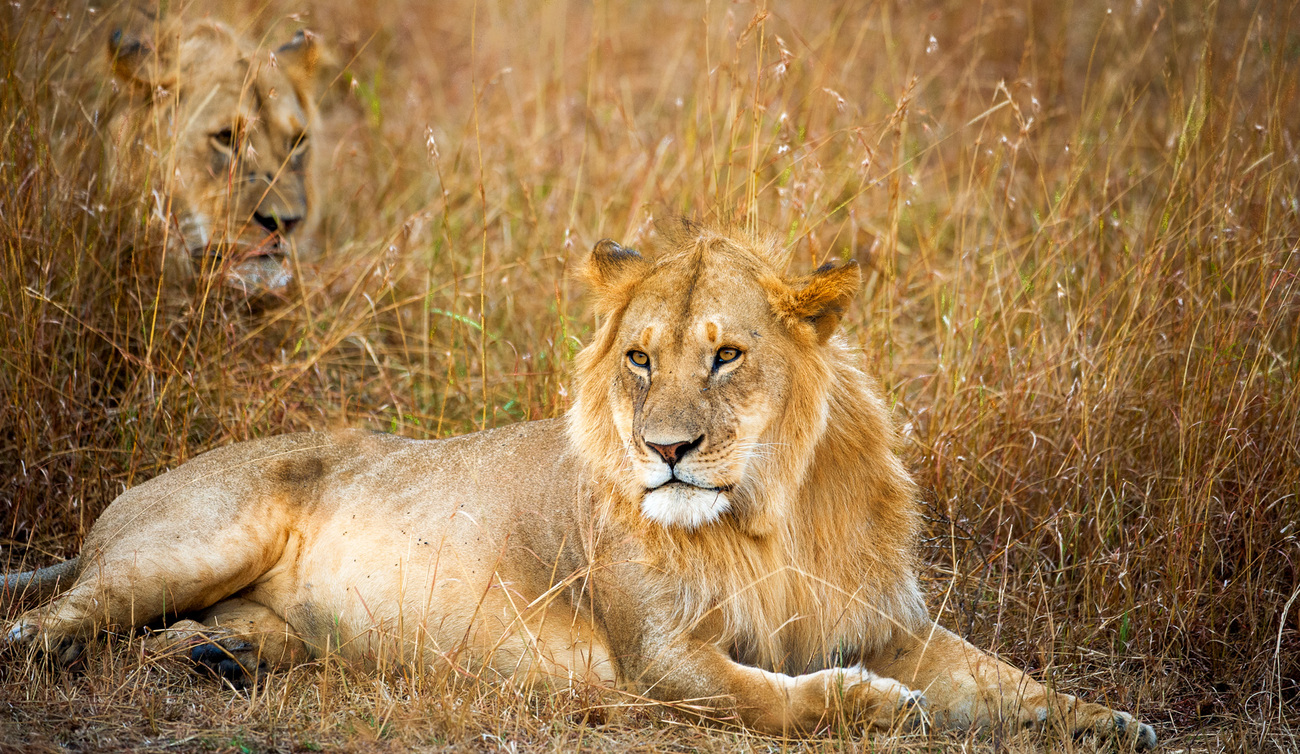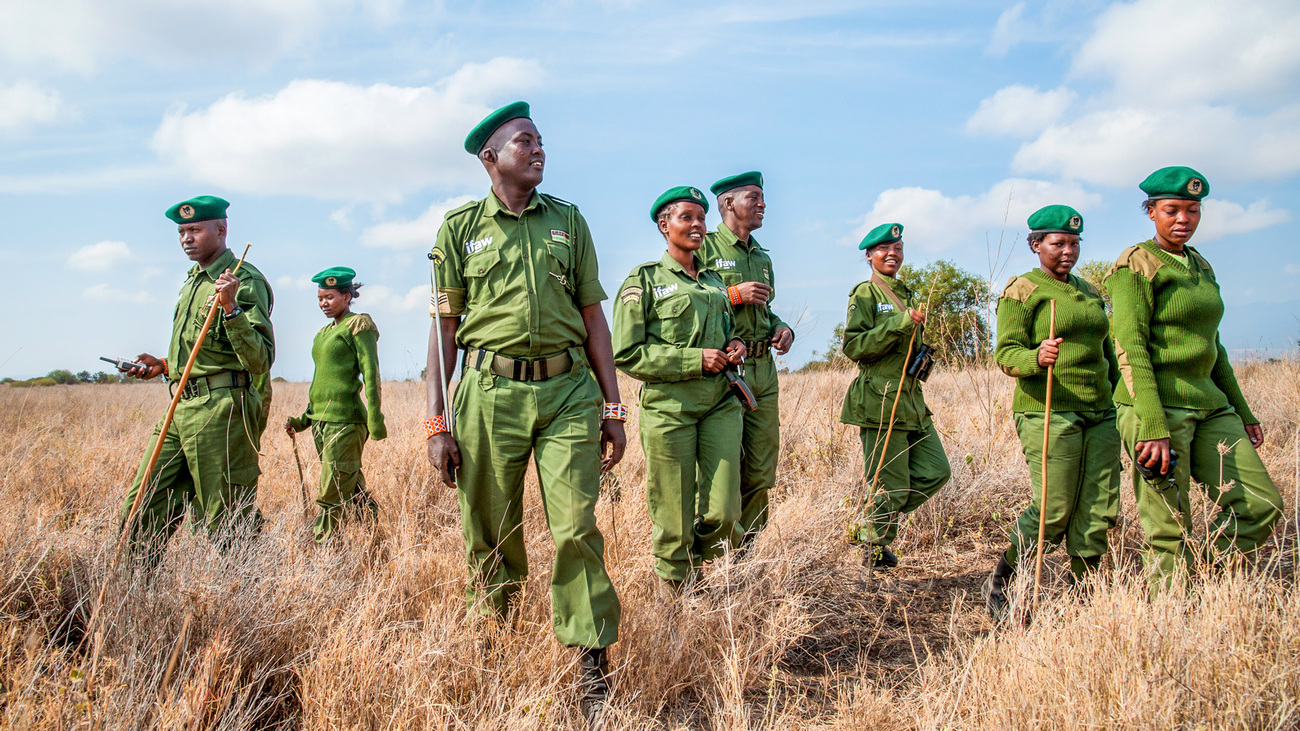Human-wildlife conflict in Kenya
Human-wildlife conflict in Kenya
Human-wildlife conflict occurs when encounters between humans and wildlife lead to negative results, such as loss of life, property and even life. It’s a particular problem in Africa, including in Kenya, where wildlife and increasing human populations frequently come into contact.
In this article, we look at where and how human-wildlife conflict occurs in Kenya and which animals are affected. We’ll also explore IFAW’s work to combat human-wildlife conflict in Kenya and beyond.

What is human-wildlife conflict?
Human-wildlife conflict refers to the negative interactions between humans and wild animals. It typically occurs where the territories and needs of humans and animals overlap, often resulting in damaged livelihoods and habitats. It can also lead to injury or death of both animals and humans. Human-wildlife conflict is anthropogenically induced, meaning it is instigated by humans—so, the responsibility lies on us to mitigate the conflict and its consequences.
What causes human-wildlife conflict?
Some of the causes of human-wildlife conflict include:
- Growing human populations and poor or no land-use planning: As the number of people on Earth increases, humans need more land for farming and infrastructure. As we encroach on animals’ habitats, we increase the likelihood of coming into contact with wildlife. Poor urban and rural planning also affects dispersal areas for wildlife and increases conflict.
- Agricultural expansion: With a growing human population to feed, natural habitat is being converted into farmland. Animals who are losing their habitats and food sources sometimes travel to farmland in search of food, in the form of crops and livestock. Farmers, keen to protect their livelihoods, may trap, poison, or kill wild animals who venture onto their land.
- Climate change: Climate change is altering the availability of food and water in some areas. This forces animals to migrate over large distances in search of the resources they need to survive and increases the chances of wildlife crossing paths with humans.
- Competition for resources: As human settlements expand into natural habitats, they compete with wild animals for food and water. These resources are in short supply in some parts of the world, partly due to climate change, which exacerbates conflicts.
What does human-wildlife conflict look like in Kenya?
Kenya is one of the most biodiverse nations on Earth. It is home to around 25,000 animal species, including many large mammals, like elephants, lions, hippopotamuses, and buffalos. Kenya also has a population of over 54 million people, as of 2022. This has led to urban expansion, bringing humans and animals into ever-closer contact—and making human-wildlife conflict a big problem. So much so, in fact, that the government has a compensation scheme for people harmed by human-wildlife conflict.
The primary forms of human-wildlife conflict in Kenya include:
- Crop raiding, where animals venture into farmland, eating and destroying crops, and harming farmers’ livelihoods
- Human attacks—when wild animals come into close contact with humans, they can display defensive and aggressive behaviours that endanger human life
- Livestock attacks—predators that travel into farmland see livestock as an easy meal, leading to losses for farmers
- Property damage, as Kenya’s large, wild mammals cause damage to fences and houses, incurring costs for people
When humans are harmed or feel threatened by animal behaviour, they may seek to kill those animals, either in retaliation or to prevent further damage to their homes and farms.
However, there is some positive news. Various community groups, along with the Kenyan government and organisations like IFAW, are working to prevent human-wildlife conflict and strive to find ways that enable co-existence in Kenya. They’re supporting farmers to grow new crops that are less likely to attract animals and introducing better land use policies.
Examples of human-wildlife conflict in Kenya
We’ll look at some more examples of how we’re combating human-wildlife conflict in a moment. But for now, let’s examine the problem in more detail.
Giraffes and humans impacted by drought
Drought in the Horn of Africa is particularly severe in Kenya. In November 2022, over 6,000 wild animals died in Kenya due to drought, including 93 endangered Maasai giraffes. But this lack of rain doesn’t just mean less food and water is available for animals and people—it also increases human-wildlife conflict.
When waterholes dry up, giraffes wander into human settlements looking for water. Here, they compete with livestock for food and water and often raid mango crops. This brings giraffes into conflict with farmers, who see their livelihoods threatened and feel forced to take extreme measures.
Farmers along the Kenya-Somalia border—where there are lots of giraffes—have created barriers that prevent giraffes from accessing the water. When giraffes try to get past the barriers, the farmers sometimes try to deter them using violent methods, including snares, spears, and pits that injure and kill giraffes.

Children scared to go to school
Human-wildlife conflict is harming children’s education. Some students report being late to school—or having to leave early—for fear of encountering wild animals. In some cases, schools have had to close altogether because teachers cannot guarantee their students’ safety.
Human-elephant conflict in Kenya
Elephants eat up to 150 kilograms (330 pounds) of food and drink up to 190 litres (334 pints) of water a day. As such, they need to travel over a large area to find water and forage. But in Kenya, natural habitat is changing due to a growing population and a changing climate. Elephant territory is increasingly broken up by farms, towns, roads, train lines, and industrial activity, like mining.
Elephants increasingly lack space and resources and more often wander into human communities. They eat or destroy crops and damage property. Elephants may also injure people who come too close to them, as they may feel threatened.
Some of the world’s most marginalised people live in areas close to elephants. They compete with elephants for land, food, water, and other natural resources. They sometimes have to encroach on elephant territory in search of water or firewood. The more humans and elephants come into contact, the greater the chance of severe human-wildlife conflict occurring.
Conflict caused by dam construction
Water and electricity are in short supply in Kenya. Dams are seen as a solution, and many have been constructed in recent years, both in Kenya and neighbouring countries. However, while this solution is solving some problems, it’s creating others.
Dams prevent water from flowing naturally into rivers and lakes and—while they are securing water for some populations of people and wildlife—they are depleting this resource for others. Dams are exacerbating drought in some areas, which can lead to increased competition for water.
Dams built close to human settlements also pose a risk. They’re bringing crocodiles and snakes into nearby communities, where they come into conflict with humans.
Human-baboon conflict
Baboons and other primates are a leading cause of human-wildlife conflict in Kenya. Baboons in particular like to steal crops and can be very aggressive when confronted. Because of this, human communities often view baboons as a pest species, making poisonings and killings common. In fact, one study found that people or their dogs were implicated in one-third of recent adult baboon deaths.
As well as baboons coming into human territory, humans encroach on theirs, particularly during dry periods when they take advantage of existing wells or build new ones to provide water for their livestock.
Conflict with lions, leopards, buffalo, hippos, and hyenas
Kenya’s larger and more dangerous mammals are also caught up in human-wildlife conflict. Impacted by drought, lions, leopards, buffalo, hippos, and hyenas wander into human settlements in search of food and water.
Lions and leopards have travelled into residential areas of Nairobi from neighbouring national parks to kill the livestock on which farmers rely for a livelihood. Large mammals like buffaloes and hippos are equally liable to attack humans when they feel threatened. Between 2017 and 2020, 388 Kenyans were killed and nearly 2,100 were injured by wild animals.
Even when human-wildlife conflict isn’t lethal, it still takes its toll. Humans have to stay away from vital water sources when wild animals are present, and the financial losses of crop raiding and property damage can exacerbate poverty.

How IFAW’s Room to Roam reduces human-wildlife conflict and enables coexistence in Kenya
Human-wildlife conflict is becoming an increasing and serious problem in Kenya, as well as across Africa. Here’s how IFAW, along with our partners and local communities, is seeking to solve it through our Room to Roam initiative. As most conservation efforts need to happen outside of formally protected areas, where people and animals live in close proximity, coexistence is the key goal.
Supporting animals and communities in Amboseli
IFAW has been working hard to minimise human-wildlife conflict in and around Amboseli National Park, which sits alongside Lake Amboseli in the south of the country. This park is home to African elephants and other wildlife, too.
Here are some of the projects we’ve been working on:
- We conducted research and helped Amboseli county secure funding to rehabilitate the Northern Water Pipeline in 2012. This pipeline supplies water to communities living in Amboseli. It’s helping to reduce conflict by securing enough water for people and their livestock.
- As part of a multi-year project from 2012 to 2019, we put tracking collars on 18 elephants to learn more about their movements and map wildlife corridors. We then established 26,000 acres of migratory routes for elephants and other wildlife, allowing animals to move safely between Amboseli National Park and West Kilimanjaro without interacting with people.
- We’ve been working with local communities to separate land for conservation, livestock, farming, and settlement, so everyone has what they need and humans come into less contact with wildlife. Well-coordinated land-use planning is critical to help reduce future risks of human-wildlife conflict.
- We’ve provided education scholarships for more than 120 children. Financial support allows students to pursue high school and higher education. It also encourages them to pursue alternative livelihoods, in areas like tourism and conservation, that put less strain on Kenya’s natural resources.

Working with Kenya Wildlife Service to protect threatened species
In the Tsavo Conservation Area, elephants and other wildlife are threatened by poachers and human-animal conflict. Tsavo is the country’s largest protected area, which makes it hard for rangers to defend and manage.
So, from 2017 to 2020, we worked with the Kenya Wildlife Service and the local community, training rangers on creating and implementing mitigation tools to help prevent human-elephant conflict, such as horns and torches that scare elephants away from humans and farmland. We also provided rangers with the vehicles and technology they needed to communicate and analyse data faster and better.
Empowering women to protect wildlife in Kenya
Jenga Mama is another IFAW project in Kenya. We’re supporting 60 women in a rural area of Kenya to develop their vocational skills—and become wildlife advocates.
The women are getting training in professions like hairdressing, dressmaking, and catering, so they can set up small businesses and generate income for their families, while relying less on the natural resources also needed by wild animals, thus avoiding encounters and conflict.
Creating one of the first all-women ranger teams in Kenya
In 2019, we created Team Lioness, a ranger unit of Maasai women, the first women in the history of their families to enter employment. This team works on the border of Tanzania and Kenya, protecting the community land that surrounds Amboseli National Park.
These rangers, who are deeply connected to their communities and the land, have a dangerous job. They’re the first line of defence against the retaliatory killing of animals involved in human-wildlife conflict—and they’re protecting animals from poachers, too. Since wildlife in the area spend more than 70% of their time outside of the unfenced park boundaries, human-wildlife conflict may often occur. As they come from the surrounding communities, Team Lioness and the other Olgulului Community Wildlife Rangers know the languages, skills, and social nuances to gather information on planned retaliation against wildlife and can stop any harm to wildlife before it happens.

A new ranger base in Amboseli
IFAW helped to establish a new ranger base in the northwest of Amboseli National Park. The base provides comfortable living quarters for 10 rangers who protect the conservation area from threats such as poaching, help with awareness raising around human-wildlife conflicts, and respond to human-wildlife conflict incidents.
In the case of conflict, rangers from the local community help to mend the relationship between people and wildlife. They help to educate communities about the value of wildlife and how humans and animals can better live alongside one another.
We need your help to end human-wildlife conflict in Kenya and across the world.
Related content
Our work can’t get done without you. Please give what you can to help animals thrive.